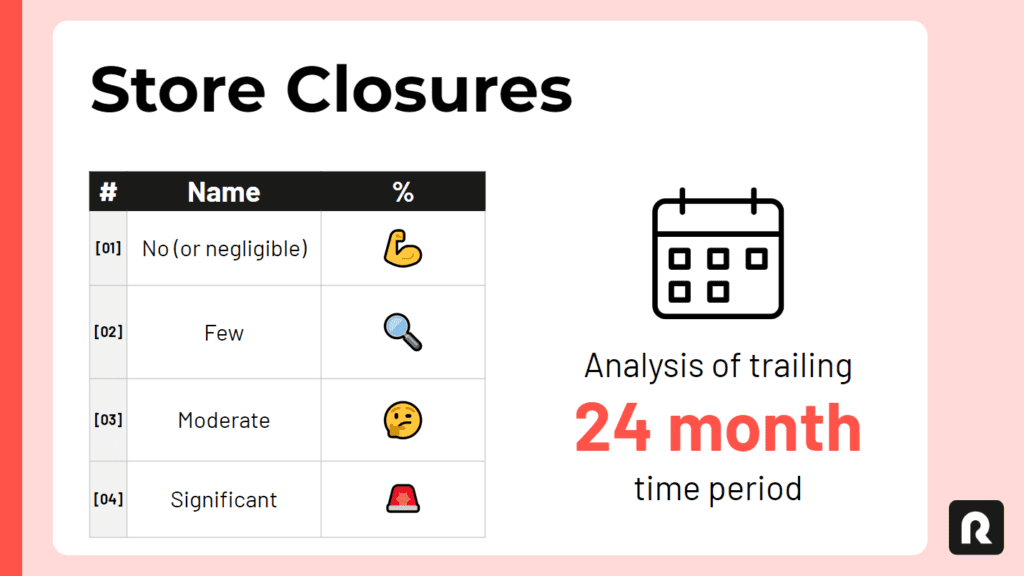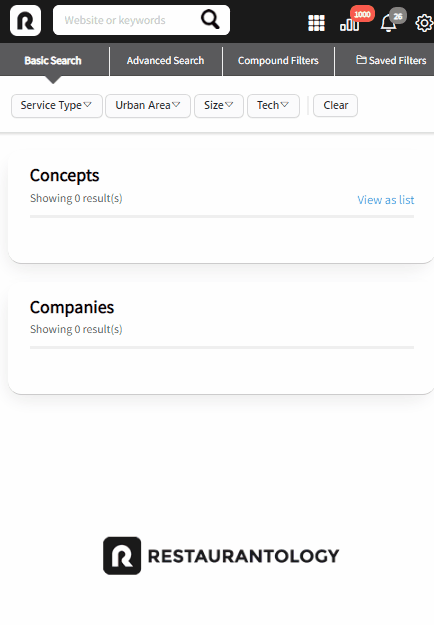Historical closures
Updated over a week ago
The Historical Closures field indicates the number of units confirmed to be permanently closed within the previous twenty-four (24) months. It can have these values:
- No (or negligible)
- Few
- Moderate
- Significant

Calculation
Closures are calculated as a percent (%) using the following formula:
(Count of units closed)* / (Count of units closed* + Count of stores open^)
* The total count of units closed includes any known, publicly-discoverable locations verified to have been permanently closed in the previous twenty-four (24) months from the time the Historical Closures calculation was performed.
^The total count of stores open is defined as the number of physical restaurant locations verified during the latest monthly scan of each candidate multi-unit website.
The threshold between each of the aforementioned 4 tiers of closures is evaluated using both the calculated percentage along with the relevant market segment, where a sliding-scale approach is applied to assign a corresponding value.
Interpretation
Assessing how many restaurant locations are publicly known to be closed is an important factor to consider when reviewing a multi-unit restaurant concept. It can help infer brand strength and stability, market positioning, risk factors, and more. Verified store closures are also particularly important in instances where closed locations remain visible on a public-facing website.
Store closures can be misleading, however, when viewed in a vacuum. Having a number of historically closed locations that is less than the number of new locations opened may lead an incorrect conclusion to be drawn. When applicable, we recommend using Restaurantology’s Inferred Status, which blends recent openings with historical closures to plot thousands on brands on a standardize growth trajectory.
Using Closures as a filter field
Historical Closures is available in both the Restaurantology Chrome extension and CRM integration products, where relevant fields can be viewed on Concept profiles and records, and can be incorporated into “Trend” filters for advanced searches and restaurant industry reverse look-ups.


